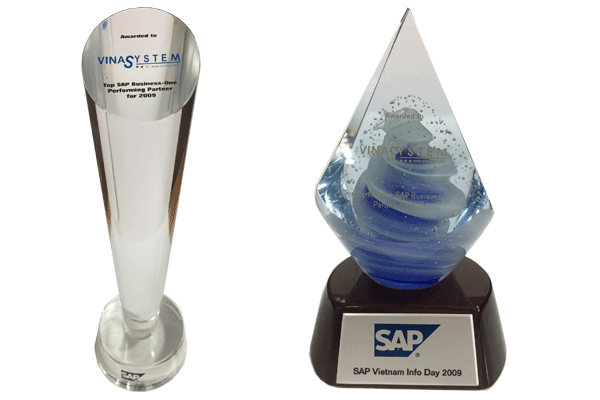
SAP Certified Application Associate - SAP Business One Release (Part 4)
31. Which of the following SAP Customer notes is termed priority 1?
a) SAP FAQ Notes
b) SAP Top Notes
c) SAP Hot News
d) SAP High News
Answer: c) SAP Hot News
SAP notes are solution to known problems. SAP Hot News are called high priority notes because they contain notes on how to resolve or avoid problems that can cause system shutdown or data loss. SAP Top Notes are component and sub component based solutions. SAP FAQ Notes contains most frequently asked questions and answers. Collections of SAP notes are published as SAP Hot News and SAP Top News. There's nothing like SAP High News.
32. The methodology that helps you operate SAP Business One on a long term basis is called
a) SAP Early Watch Alert
b) Operation Concept
c) Support Desk
d) Escalation Handling
Answer: b) Operation Concept
SAP Business One has a number of support tools, each with its own function. The implementation and operation concept is a support tool that guides the implementation and management of the system, especially on a long term basis. The SAP Early Watch Alert collects system data, analyzes it and generate recommendation report. The support desk is another support tool that allows you create problem messages and send to SAP from within SAP Business One. Message escalation and project escalation are also support offerings that are handled by team of experts.
33. Alternative item row type can be defined for which document type?
a) Purchase Order
b) Sales Order
c) Goods Issue
d) Sales Quotation
Answer: d) Sales Quotation
It is possible to include the row type field in marketing documents. The possible row type definitions are Blank, Text (T), Subtotal (£) and Alternative item (A). The alternative item row type applies to only sales quotation. When it used, the value is not considered in sum calculation.
34. You are using special prices in SAP Business One and you observe blue rows in the special prices window. Blue rows show that
a) The item rows are not in stock.
b) Special discount groups are the row items.
c) No special prices were defined for the item rows.
d) The item rows have validity/quantity based special prices defined for them.
Answer: d) The item rows have validity/quantity based special prices defined for them.
There are business requirements in which you do not want special prices to depend directly on the business partners, but on the items and associated price lists. If a customer buys an item, and neither a special price nor a discount group has been defined for the customer or this item, the special prices for the price list applies. This is setup under Inventory > Price Lists > Hierarchies and Expansions. When the lines for special price are expanded, the special price is displayed in blue in the Hierarchies and Expansions window.
35. Commission can only be calculated for the following except
a) Sales Employee
b) Item group
c) Item
d) Customers
Answer: b) Item group
During system setup, under Administration > System Initialization > General Settings, BP Tab, you can define how commission is calculated. Commission can be awarded based on the sales employee, item or customer specified in the document. This setting influences where you can specify the sales commission percentage, but does not automatically calculate any commission transactions. This setting is not static; it can be changed at any time. Commission calculation cannot be defined for Item group.
36. You want to use the Pick and Pack manager in SAP Business One, what are the statuses available?
a) Open
b) Picked
c) Released
d) Blocked
Answer: A, B & C
The Pick and Pack Manager is used to handle the picking process. The process starts with the creation of a pick list, then to the reporting of picked quantities, and ends with the packaging and delivery of the picked items. The possible Pick and Pack statuses are Open, Released and Picked.
Open - Displays the open Sales Order or Reserve Invoice rows.
Released - Displays the released quantities ready to be picked that exist in the pick list
Picked - Displays the picked quantities.
Blocked is not valid status.
37. What happen when you define the opening balances function and the system currency differs from the local currency?
a) An error message appears
b) You must manually convert the balances
c) The balances are converted automatically
d) It is not possible to enter opening balances when different system and local currencies are used in a company.
Answer: c) The balances are converted automatically
When using the opening balances functionality, enter opening balances in the local currency in column OB (LC) only if data is to be entered in the local currency. If the system currency is different from the local currency, the system automatically calculates the opening balances in the system currency and displays the values in column OB (SC). Hence, it is possible to enter opening balances even when the local and system currencies differ and an error message is not displayed as a result. If a foreign currency has been defined for an account, the OB (FC) field will be active. The system automatically calculates the amounts in the local and system currencies, using the valid exchange rate on the value date. It is important to state that opening balance for a multi-currency account can only be entered in local currency
38. Which of the following is/are true about the Data Transfer Workbench when it encounters an error?
a) Rollback occurs and all data records that are already imported are removed from the system
b) An error message is displayed and nothing happens.
c) The import process stops after a number of errors, yet to be imported records are stored in an error file
d) The import process stops after a number of errors and all records that have already been imported are retained in the system.
Answer: A, C & D
The Data Transfer Workbench is a tool for data migration. Another functionality that can be used for importing data into SAP Business One is the native import functionality. SAP Business One has a number of ways of handling errors while importing data into the system. When error is encountered while data upload is in progress, a rollback occurs and all data records already imported are removed from the system. Alternatively, the Data Transfer Workbench stops the import process after a certain number of errors and does not rollback. All records that are yet to be imported are stored in an error file while the records that are already imported remains in the system.
39. Which of the following are true about the uses of user defined fields in SAP Business One.
a) It is used for integration into document templates
b) It is a tool used to generate SQL statements
c) It is used to find objects
d) It is used to format data records
Answer: A & C
User defined fields can be used for document template integration, search objects, store additional information such as pictures and files and reporting. It is not a tool for generating SQL Statements. The Query Wizard and Query generator are tools used for generating SQL statements. However, user-defined fields can be displayed in the print layout designer or in the Query Generator window. Also, it is not used for formatting data records.
40. What are the levels of authorization available in SAP Business One?
a) None
b) Read Only
c) Full
d) Peer
Answer: A, B & C
SAP Business One has it's own in built authorization levels. Authorizations allow users to view, create, and update documents and you assign them according to data ownership definitions. This is to enforce some sort of data security and controlled access. By default, a new user has no authorizations. The three possible levels available are None, Read Only and Full.
None: the user has no access to that functionality.
Read Only: the user can only view, but not change data.
Full: the user is able to display and modify data for that functionality per module.
Peer is solely related to data ownership concept in which the user and the owner share the same manager on their corresponding employee records.
SAP Business One Certification Question Part 3
Sample questions for Business One certification
The history of SAP Business One






